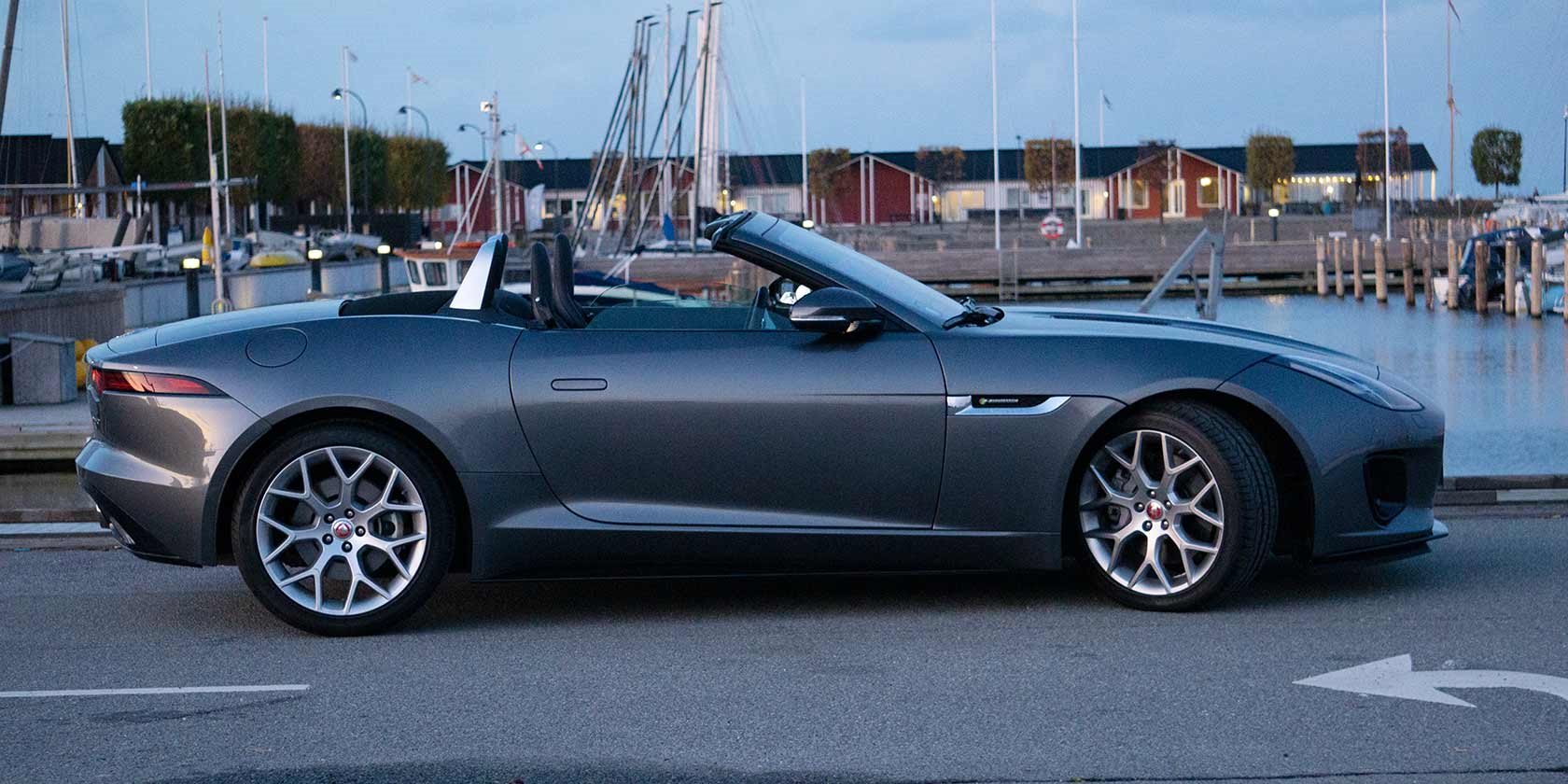Queen of the Crown Princesses
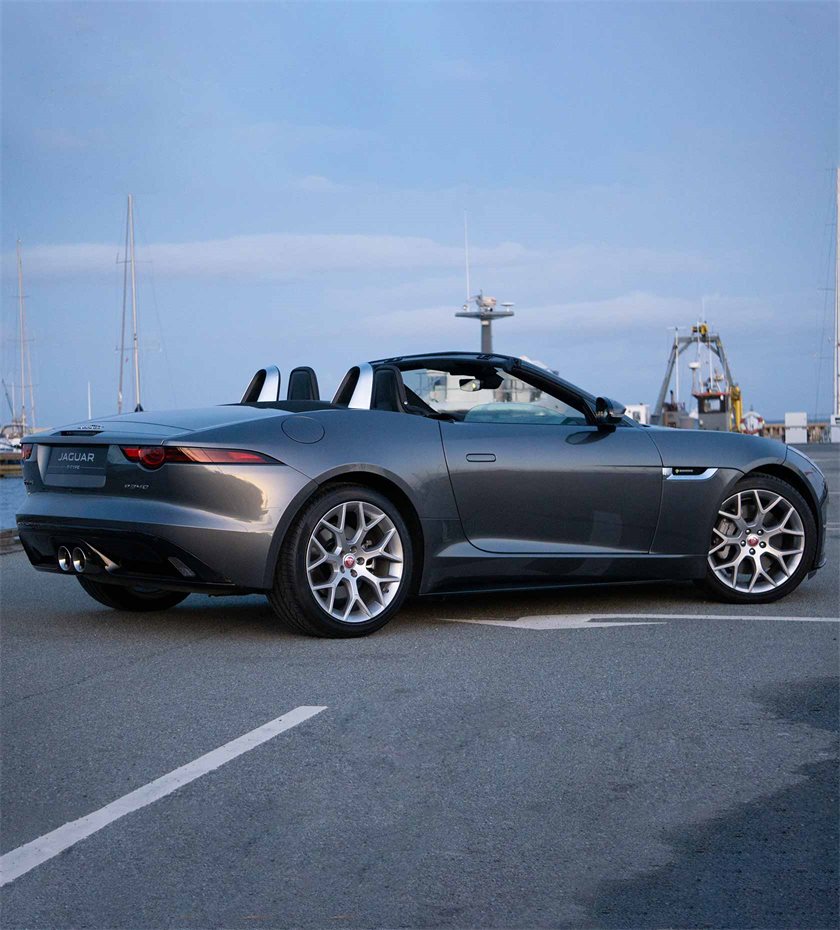
Jaguar F-Type
Most people know about Jaguar’s classic sports cars XK and XKR. Those classic yet unique silhouettes, with small rear seats, manufactured as a Coupé and a Cabriolet. Production of the model was discontinued in 2014, which was like rubbing salt into English wounds. Painful enough that Tata Motors had acquired the iconic English brand in 2008, but to remove the signature model six years later, was just about unbearable. Precisely because of this, the F-Type was launched in 2013. A concept model is a car that doesn’t really fit with the catalogue, but whose purpose is more about marketing the brand for a while and then to be forgotten afterwards.
This was precisely the plan with this innovation, which now only had two seats but still radiated Jaguar’s famous lines. A one-day wonder to show the esteem for the previous models, it was thus also produced from a strategic perspective, where in itself, it would not be profitable, but it would help Jaguar’s branding and identity. But the F-Type had other plans. Other, as in radical.
Classic design
Two seats, front engine, rear boot and rear-wheel drive. A design basis more often categorised as a roadster when talking about a Cabriolet or Coupé with a fixed roof. From the beginning, many rational views were against it because the model had an unlucky combination of price versus practical use.
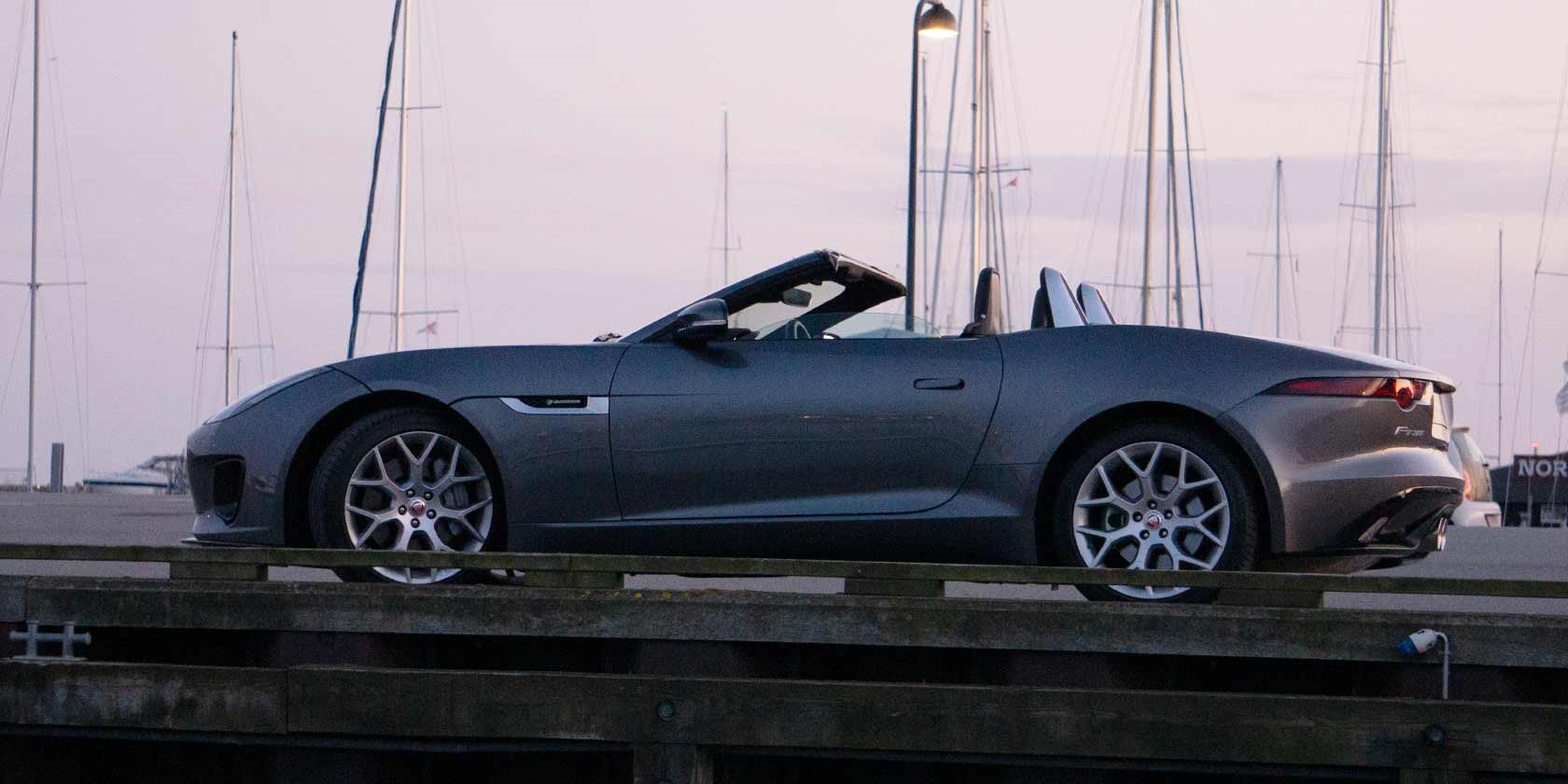
When launched on the European market and depending on the individual country’s tax and duties structure, prices started at around EUR 70,000. It was clear that this was not a family car, nor was it a car for a couple with such a small boot. It would be a second car, for the kind of consumer whose budget could easily afford a fairly powerful sports car. At the same time, from the very beginning the F-Type’s design meant that it had problems with traction when accelerating. This was not because it was a poor car. It was a natural consequence of its weight distribution. However, Jaguar added a spectacular detail in the form of Dynamic Stability Control, which enhances vehicle stability when accelerating and when starting from a standstill. This may result in a sight screech from the rear wheels while the car stabilises. Or in the case of this lady, a slight and elegant sashay.
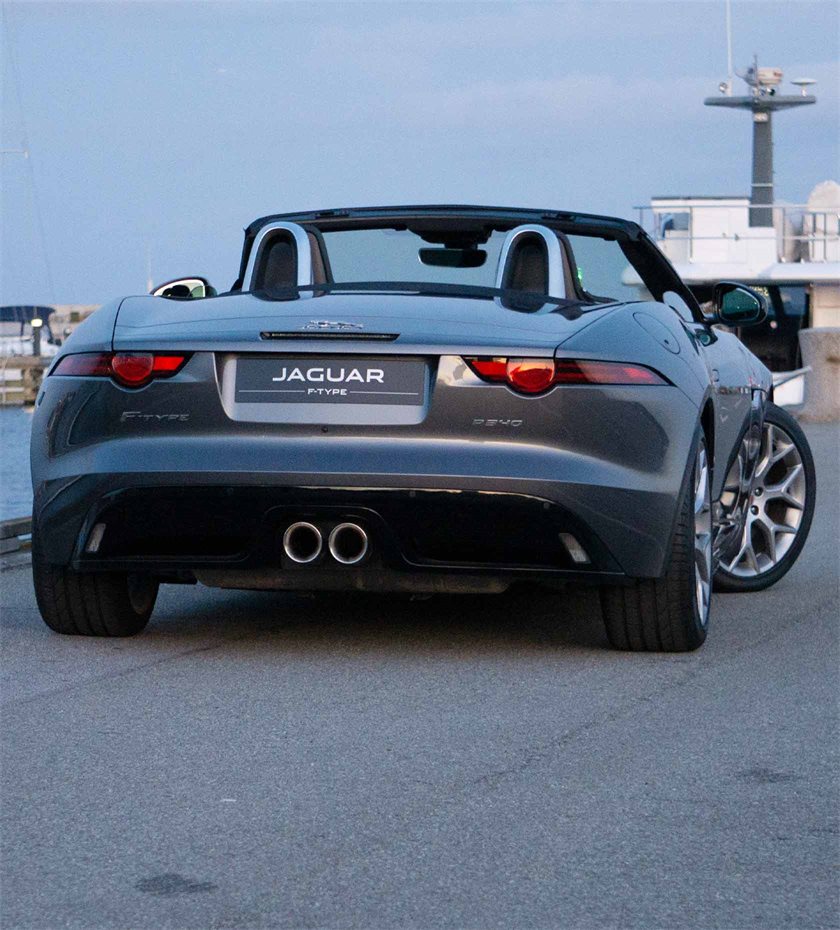
Sure success in the open
Two new versions were launched at the Geneva motor show in 2016. One of the cars had manual gear. On its own, you could call it a rounding off of the car’s era, a desire to create a version for connoisseurs. But the other new car, was quite the opposite. A four-wheel drive version, AWD. And that meant that Jaguar had invested comprehensively in developing the F-Type. As for the car’s design, one word sprung to mind: innovation. New chassis. New drivetrain (gear and transmission). New balancing. New engine installation. Taking all of these elements together, you might as well say they’d designed a new car. The innovation didn’t stop there – because there was also a new production line, the most expensive in the automobile industry. Development of the car seriously got underway at the start of 2016. Today, three years later, the princess has even more sisters. For example the ultimate SVR V8 AWD, absolutely the most exciting, with massive power and performance. The Cabriolet version is the most popular, with 3.0 l V6 turbo engine and rear-wheel drive, it radiates pure elegance and pretentious on the streets. And take note – the performance of this version is not curtailed in any way. A top speed of 260–270 km/h, with only slight vibration in the rear, which tends to happen at high speeds in sports cars with front-mounted engines.
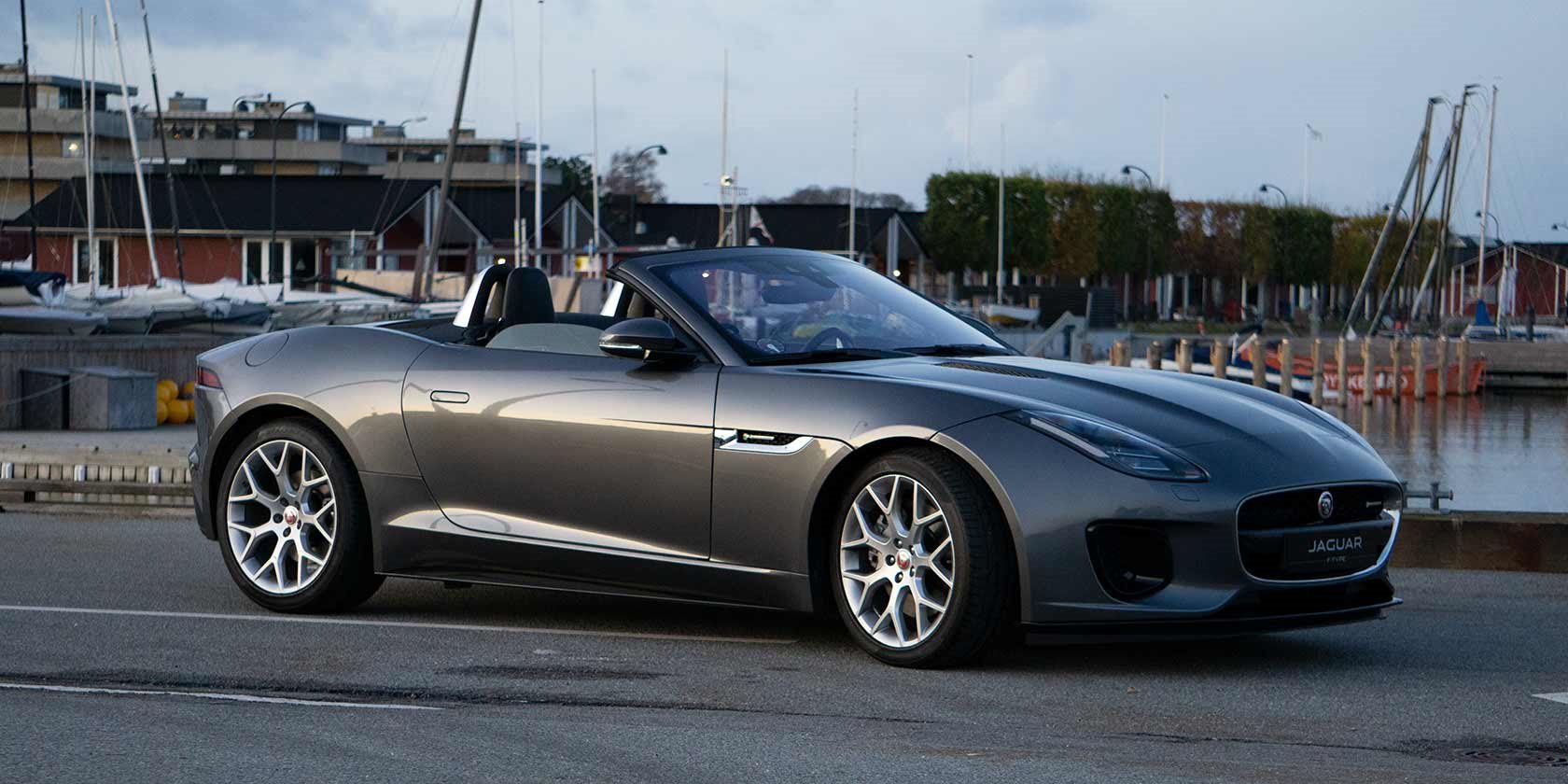
Competitors?
Mercedes offer an old acquaintance, SL and SLC, where SL is analogous with F-Type 5.0, and SLC with version 3.0. Cars that give out an immense aura, but also an aura that the seven year old lady already glows with. BMW´s Z4 has the same basic design and compared to version 3.0, the German top model actually has slightly better acceleration at lower speeds and it is slightly less expensive. Another sports car that is often referred to as a competitor is Porsche 718. Her design is basically very different, a sports car with a centre-mounted engine. But despite this, there are some positive aspects that the two cars share. Because the 718 was launched as a less expensive alternative to the 911 Carrera, which quickly gave it a less than flattering nickname. But today, if you ask test drivers, there’s no doubt just how much better and better-running it is compared to its big sister. This surprised Porsche and today they have major problems trying to keep it at bay, to prevent the devaluation of the icon 911. With the engine located low, in the centre, the 718 has the optimal design and without doubt, it is better than the F-Type as far as serious sports driving is concerned. But just to emphasise it again, the Jaguar’s design means it is among the best-running if not the best-running of its class. In practical terms, we’re talking about two cars that supplement each other. But on one point that always comes up for discussion, the F-Type comes out on top every time. Because what could be more beautiful than this most loveliest princess?
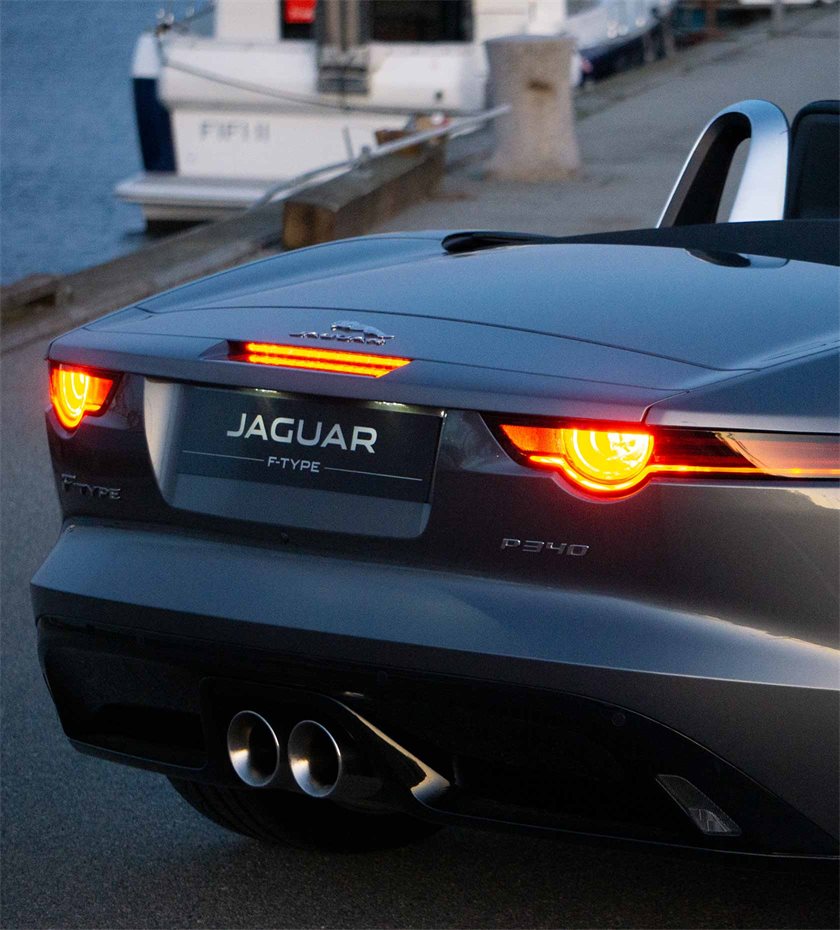
The loveliest of them all
No rear seats, unlike the XR or XKR. Here we have a sports car that in no way can be considered just a marginal kind of a utility car. It is solely designed for enjoyment. The exterior and interior have many fine deigns details. The rear spoiler is first raised at 90 km/h, thus ensuring a completely outstanding silhouette when at a standstill, particularly with the Cabriolet versions with the roof down. The previously mentioned Dynamic Stability Control – said in a loving way – creates a slight and elegant sashay. The fine and beautiful details continue in the cockpit, with racer fields in the speedometer and eye-catching rpm counter, which emphasises this is a sports car. A passenger handle to hold onto when the fun gets serious. The elegant paddle shifters behind the wheel have the kind of superb finish you expect from Jaguar.
Perhaps we will never know the reason for its success, but a good guess is the extra refinement of the models that the car was originally meant to be in praise of. Or perhaps it is precisely this mystery that creates the magic that makes the F-Type so unique. A princess that was mostly for decoration. But she was born with more than that. Because there is only one princess that is lovelier than all the rest and that’s the crown princess. And among crown princesses, there is only one queen. The new Jaguar F-Type.
